The Future of Branding: How AI and Human Creativity Work Together
Reading time: Date: Author: Introduction Branding has always been about emotion, storytelling, and connection. But in 2025, the rules of…

At Aeon Studio, we believe in limitless possibilities shaped by clarity, balance, and refined simplicity. Our identity is built on principles of purpose, discipline, and meaningful design — values that guide every project we craft. From distinctive branding and thoughtful digital experiences to refined visual systems, our work reflects the philosophy we live and create by. Explore the essence of our brand, discover the structure behind our logo, and see how our vision comes to life.
View our brand →

At Aeon Studio, we believe in limitless possibilities shaped by clarity, balance, and refined simplicity. Our identity is built on principles of purpose, discipline, and meaningful design — values that guide every project we craft. From distinctive branding and thoughtful digital experiences to refined visual systems, our work reflects the philosophy we live and create by. Explore the essence of our brand, discover the structure behind our logo, and see how our vision comes to life.
View our brand →

Reading time:
Date:
Author:
In a world where design and technology constantly redefine the rules, what felt fresh in 2018 may now look outdated. In 2024, design embraces both nostalgia and innovation — merging analog warmth with digital clarity, and focusing not just on aesthetics but also on meaning and functionality.
Retro never truly disappears — it reinvents itself. In 2024, designers are looking back at the optimism of the ’70s and mixing it with futuristic elements. Muted earth tones, bold geometric patterns, and gradients inspired by analog print techniques meet modern, digital polish. Brands use this blend to evoke familiarity while signaling innovation, striking a balance between comfort and progress.
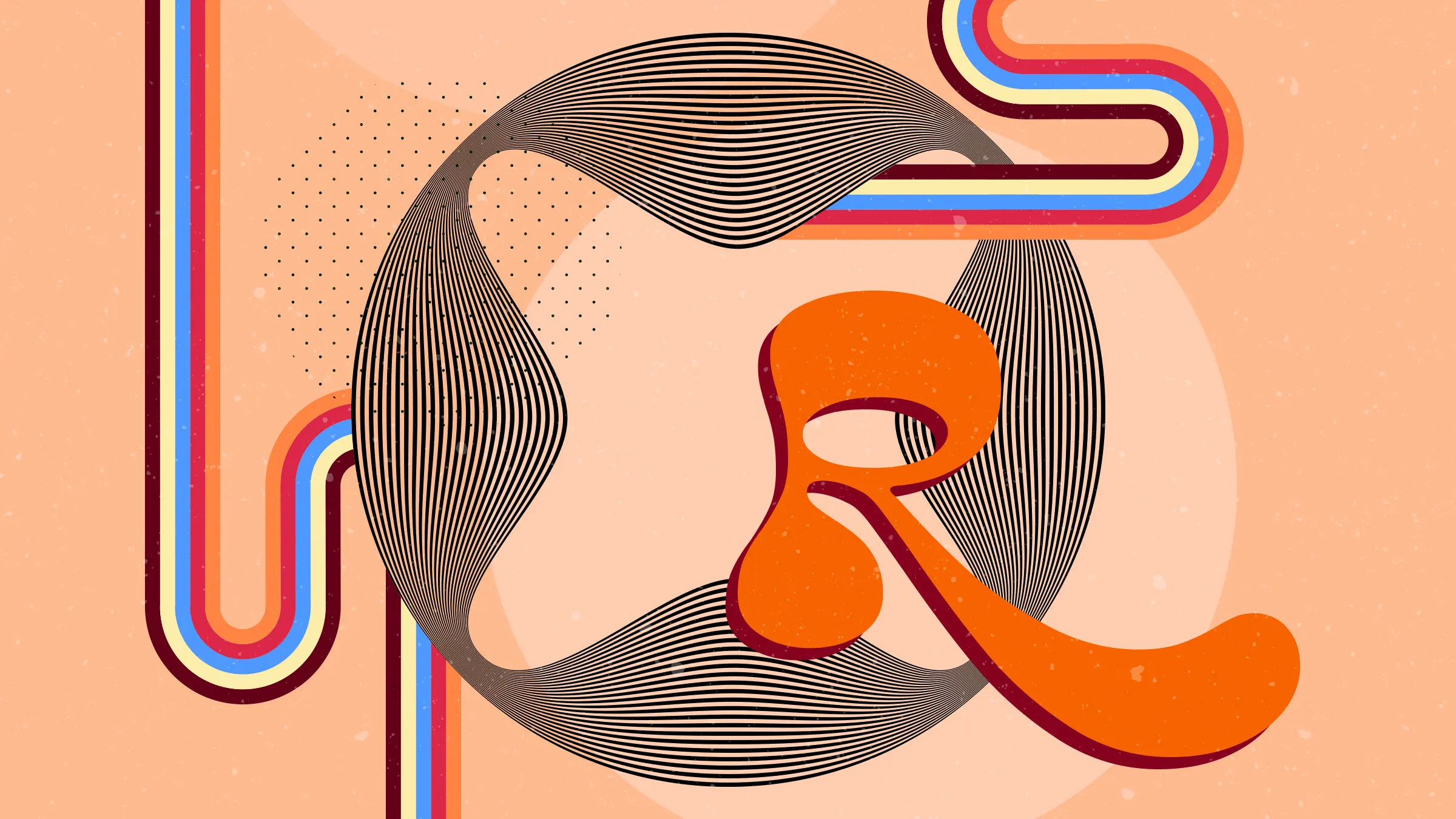
Perfect grids and clean layouts are giving way to intentional disruption. Anti-design challenges conventions by embracing asymmetry, clashing fonts, distorted type, and layered visuals. It’s not about chaos for chaos’ sake — but about creating bold, unforgettable statements that grab attention in a noisy digital landscape. For brands that want to stand out, experimental typography communicates confidence and modern edge
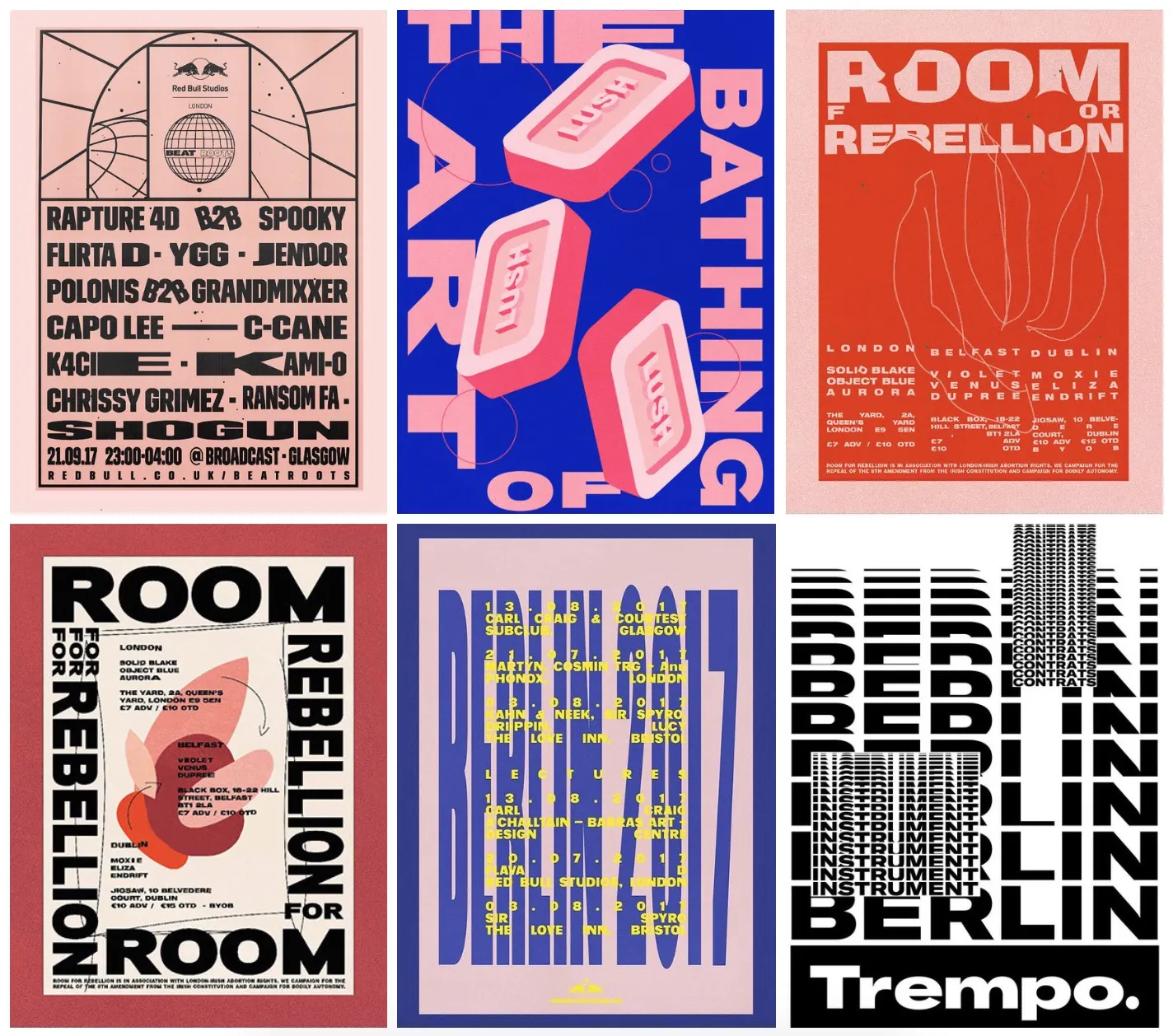
Image borowed from: SCHROCKSTUDIOS
Gradients have matured far beyond simple two-color blends. In 2024, we’re seeing multidimensional gradients combined with textures — think metallic sheens, iridescent layers, and organic transitions. These create depth and tactility, making digital designs feel more “real.” They’re being applied across web, app interfaces, and even packaging to bridge the gap between flat digital visuals and sensory experience.
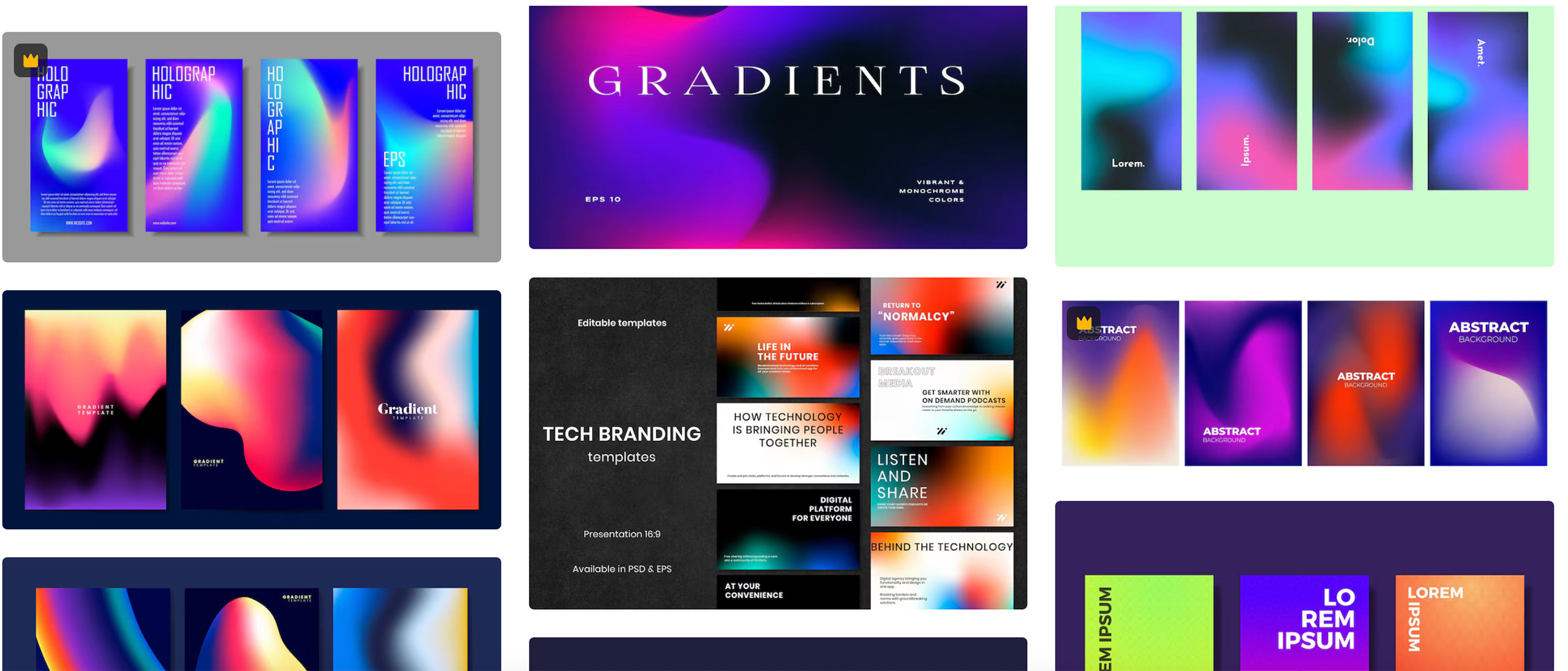
Screenshot from: FREEPIK
Stock imagery and generic assets are losing ground to highly customized, branded motifs. From repeating illustrations to hand-drawn icons and abstract patterns, these assets give brands a unique fingerprint. Patterns are being used as backgrounds in digital layouts, as wrapping in packaging design, and even as subtle textures in UI — ensuring that every touchpoint feels distinctive and consistent.
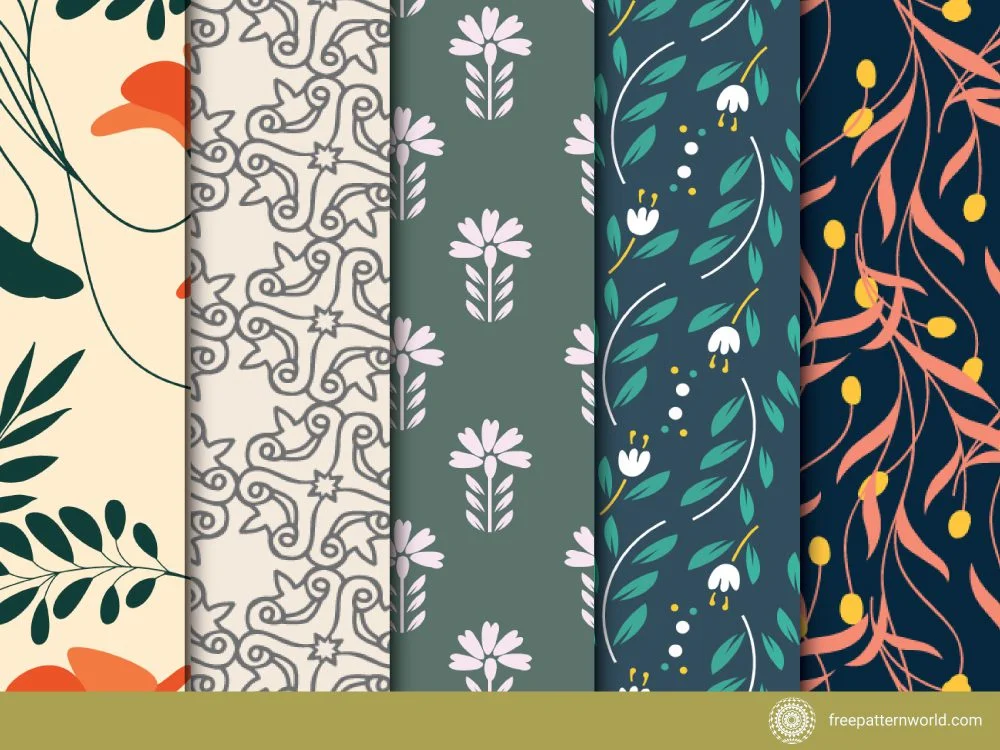
Screenshot from: FREEPATTERNWORLD.COM
Minimalism remains a dominant force, but in 2024 it takes on a more functional face. This isn’t minimalism for aesthetic’s sake — it’s about improving usability. Simple color palettes, generous whitespace, and clear hierarchy allow users to navigate faster and with less friction. For brands, utilitarian design communicates transparency, trust, and a focus on real value instead of decoration.
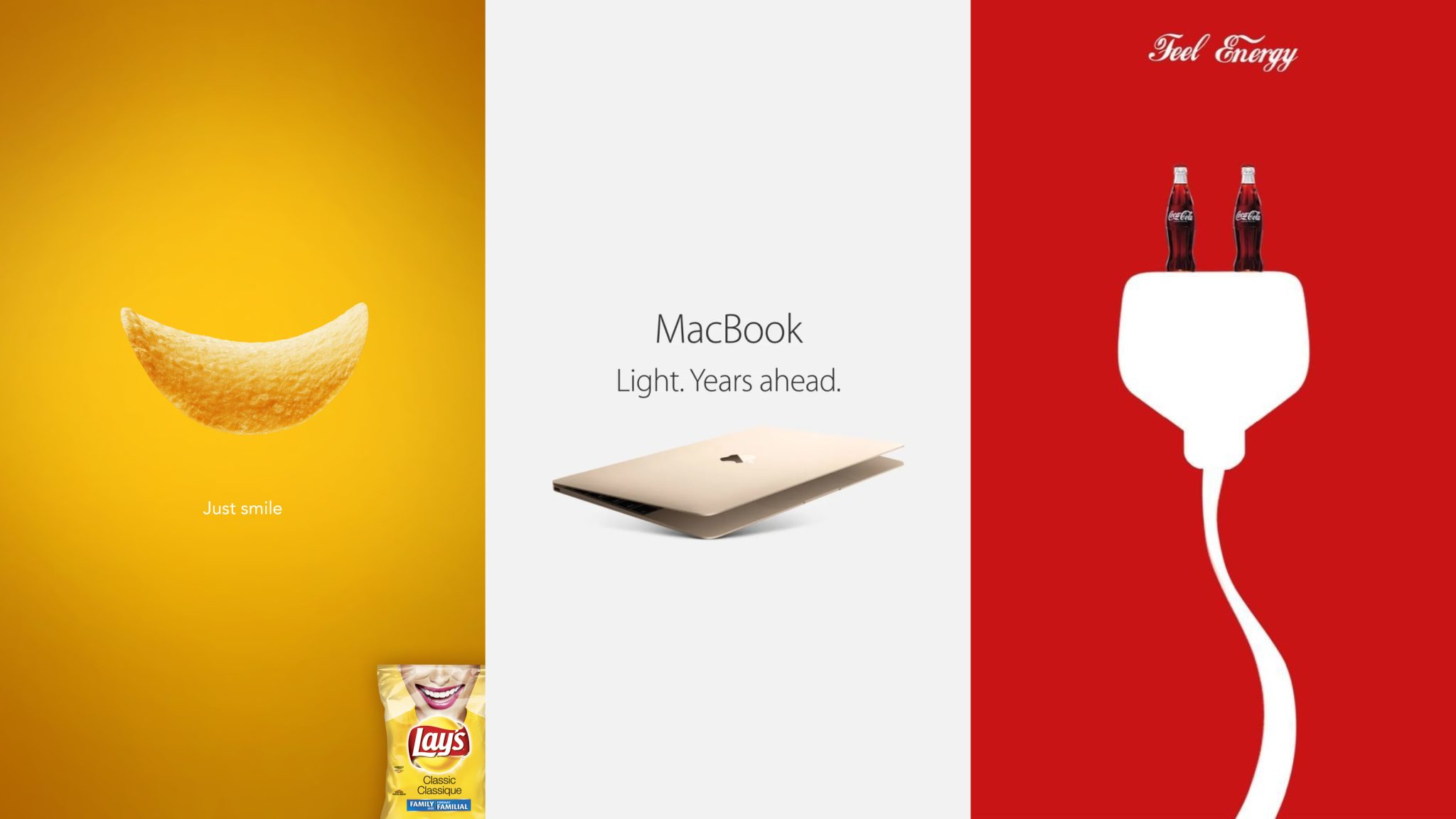
With AI becoming a mainstream design tool, many creatives are merging machine-generated imagery with hand-crafted elements. Collage styles, glitch effects, doodles layered over digital renderings — these mashups create visuals that feel both futuristic and human. This trend emphasizes playfulness, experimentation, and the creative dialogue between technology and personal expression.
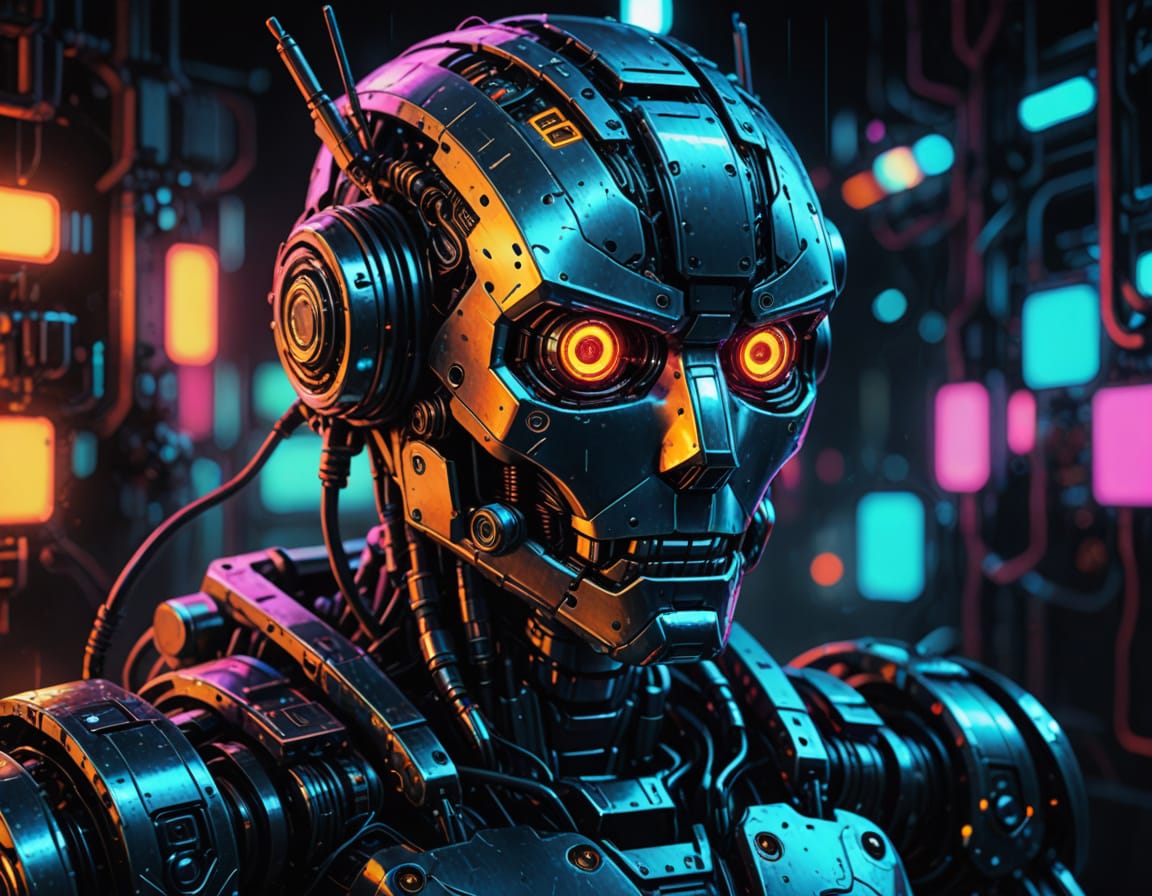
As sustainability becomes a central value for consumers, brands are turning to nature for inspiration. Organic shapes, earthy tones, botanical textures, and natural gradients are everywhere in 2024. From eco-friendly packaging to digital backgrounds, biophilic design creates a sense of calm and responsibility. It’s not just visual — it signals alignment with conscious, environmentally aware lifestyles.
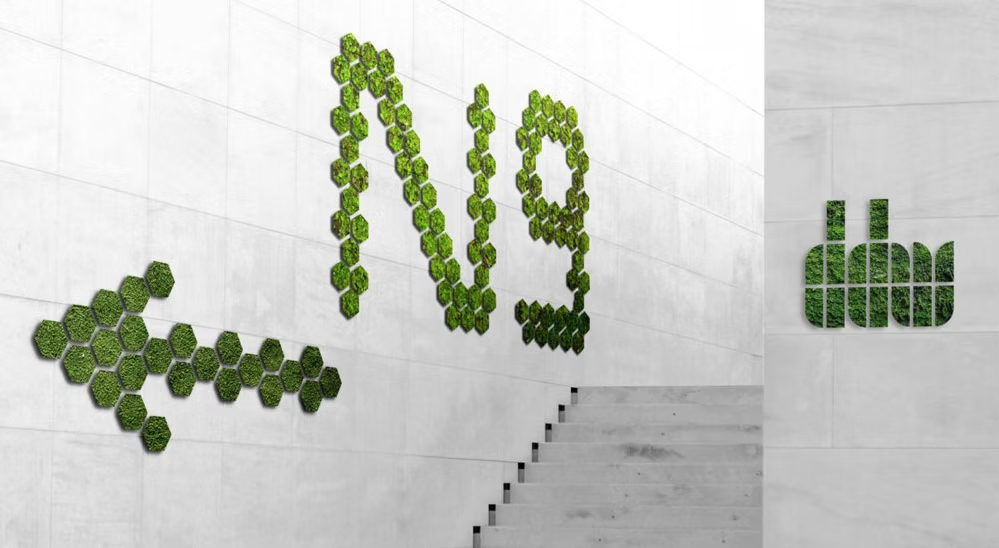
Internet culture continues to shape design in unexpected ways. Aesthetics like Frutiger Aero (early 2000s skeuomorphic web look) or Whimsigoth (a dreamy, gothic-fantasy vibe) have gained traction through TikTok and niche online communities. These micro-aesthetics bring cultural nostalgia into mainstream branding, allowing companies to tap into emotional memory while still feeling playful and contemporary.

2024 is less about chasing “what’s new” and more about redefining the familiar. For brands, the opportunity lies in balancing modern functionality with emotional resonance. These trends are not just styles — they’re strategic choices for staying relevant.
>_ You liked this one?
Reading time: Date: Author: Introduction Branding has always been about emotion, storytelling, and connection. But in 2025, the rules of…
Reading time: Date: Author: Introduction In 2024, sustainability moved beyond being a buzzword — it became an industry standard. From…
Reading time: Date: Author: Aeon Studio on Sketch Blog One of our proudest moments in 2024 was being featured on…
Reading time: Date: Author: Introduction Great design doesn’t happen by accident. Behind every successful brand is a deliberate and deeply…
Reading time: Date: Author: Award-Winning Design – Premium Tartufi at the International Design Awards At Aeon Studio, design has always…
Reading time: Date: Author: Color of the Year 2024: Peach Fuzz — Why It Matters and How to Use It…
Reading time: Date: Author: In a world where design and technology constantly redefine the rules, what felt fresh in 2018…
Reading time: Date: Author: When Aeon Studio was founded, the vision was clear from the very beginning — to offer…
Reading time: Date: Author: As businesses evolve, so do their audiences, services, and ambitions. Yet many brands find themselves stuck…